Modeling Catenary on Viaducts
Although I ended up not using any viaduct (outside of one end of the Urban Station) I did a number of tests during the planning stages and among these were evaluating how I should do catenary on viaducts.
As previously noted on the Catenary and Ground-level Track page, Kato’s double-track catenary poles actually come in two sizes. One size (23-057 and 23-060) fits inside double-track viaduct, giving a better appearance, while the other size (23-061) fits outside the viaduct. Both can be used with non-viaduct track. Kato also makes poles for single track, and these can be used for double-track with a pole on each side, using either type of base, although the spacing isn’t correct for the “outside the viaduct” bases.
The bases that come with the older precast-concrete style viaduct piers (23-018, now discontinued by Kato) fit the narrower form, while the bases that come with the superelevated curved viaduct set (V12, 20-871) and the new precast-style viaduct piers (23-020) fit the wider form. See the Viaducts and Track page for some additional detail on these.
It would appear that Kato is transitioning to the wider spacing, at least for viaducts, as part of their addition of superelevated curves. This track is more likely to cause a clearance problem with longer cars since those will both “hang over” the inside edge of the curve and lean towards the inside, bringing them closer to the pole. However, at present they are still producing poles in both forms, and you can still (as of early 2012) get the narrower bases with the poured-concrete style “double track piers” (23-019) used for bridges.
On the prototype, examples can be found of double-poles mounted inside or outside the viaducts on both Shinkansen and normal lines, and of single poles likewise used on double-track. So any choice is “prototypical” unless you are trying to model a specific line, and I’m not. Purists, however, should note that the insulators used in Kato’s models are typically those appropriate for low-voltage lines and, as noted on the Kato Catenary page, the heights are designed for ease of use, not prototypical height.
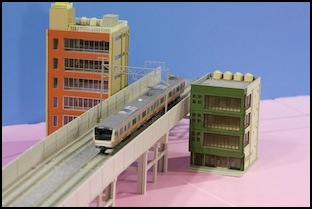
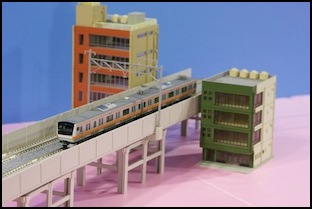
Comparison of Inside Mounting Poles (left) and Outside Mounting Poles (right)
The pictures above show the two types of mounting, and the difference really is quite subtle at a distance. That said, I’d prefer to use the “inside” form, as I think it looks better. The question is: will it work?
The answer appears to be “yes”, at least for the trains I have today. Clearance with a typical commuter train is more than adequate, and even with my longest car (a 500 series Shinkansen) there appears to be a gap of about 1/8” (3mm) on banked track.
Additional info: inside the viaduct poles will sometimes cause problems with longer Shinkansen, or with “tilting” train models (some models have pivots inside the body to make them tilt on curves the way their prototypes do, even if the curve isn’t banked).
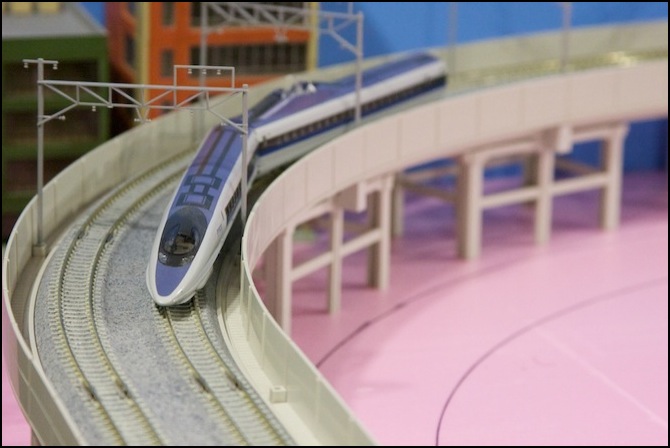
However, the 500-series is not the longest car made, and the clearance is close enough that there may be problems with longer stock or with “tilting” cars like the N700 Shinkansen. I could have problems in the future, but for now I’m going to use the narrow poles where I have clearance problems.
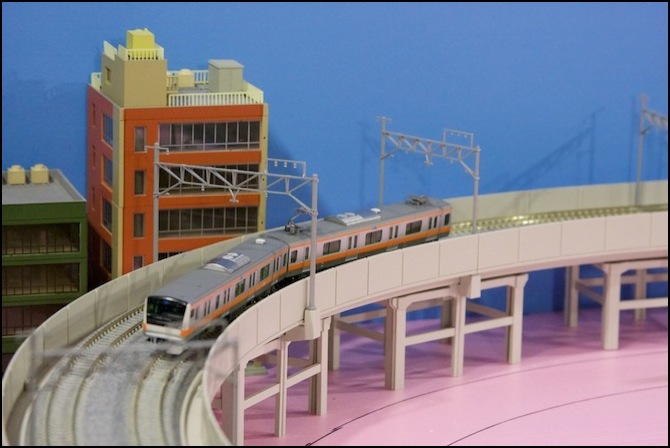
This picture (above) shows a better comparison of the 23-060 (inside the viaduct, at rear of train) and 23-061 (outside the viaduct, above first car of train) poles. These are basically identical except for the spacing of the poles, and show a simple style of catenary hanger, similar to that used on low-voltage commuter lines.
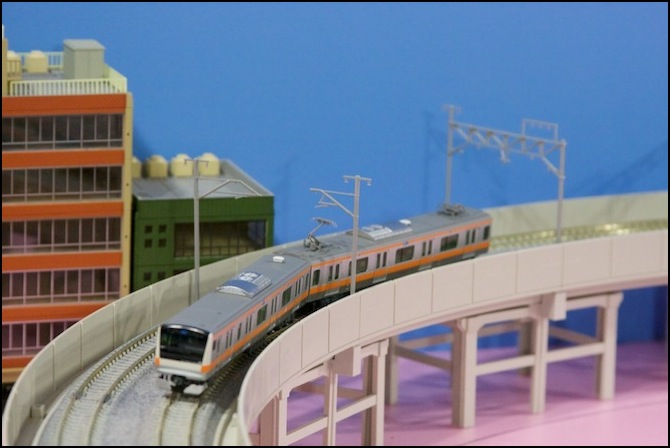
This is what the single-poles (23-056) look like on double-track viaduct. The use of the cantilever-arm style of hanger (often used on Shinkansen lines) places the structure closer to the pantograph, but still with plenty of clearance. It also means these would look very bad if used with the “outside the viaduct” bases, since the hanger would be clearly too far off to the side.




